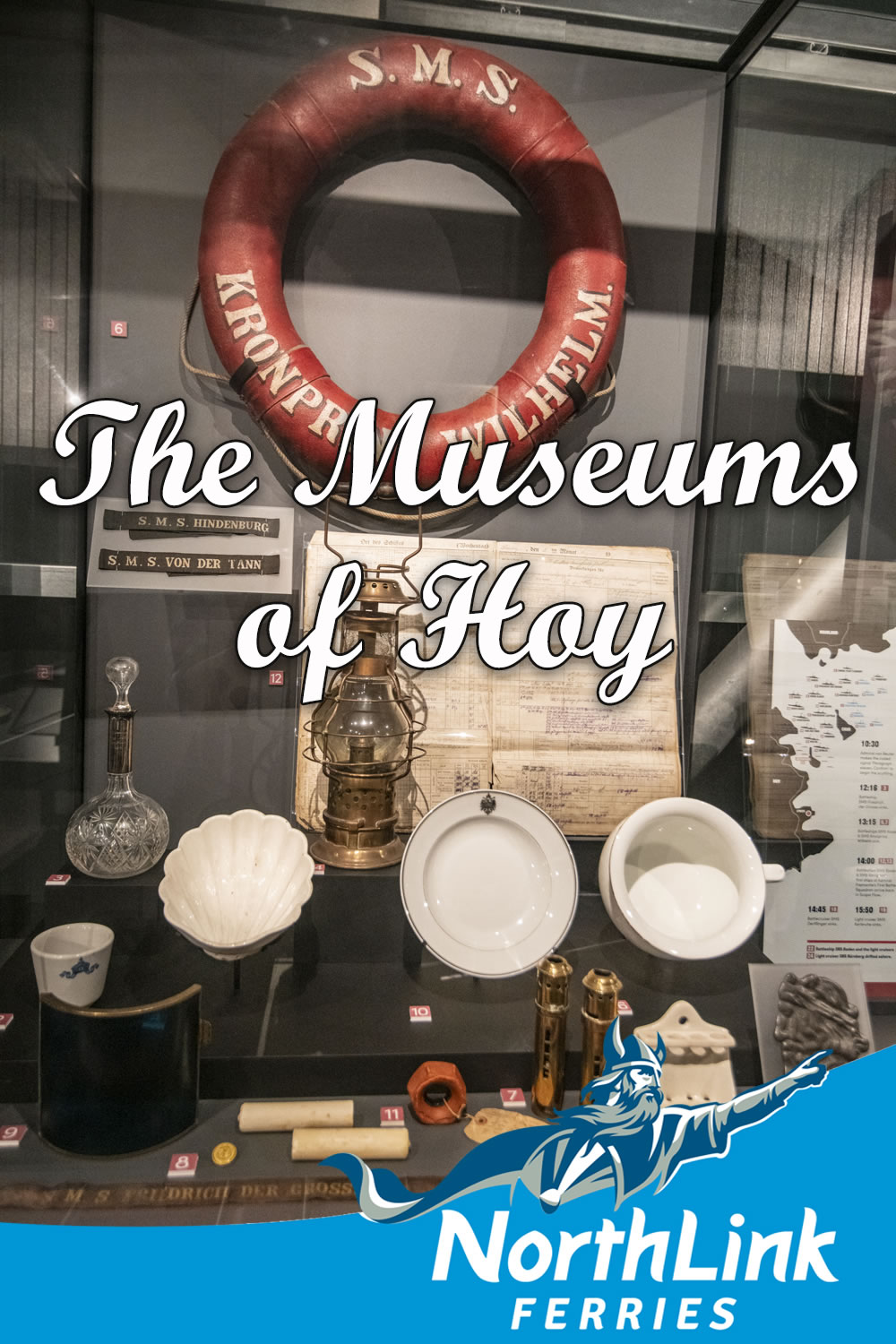The Museums of Hoy
There are a wealth of places to visit on the dark enchanted island of Hoy.
In the north there is Rackwick valley, surrounded by steep hills and a lovely, curved beach – a peaceful haven where the only noise you might hear will be the boom of the sea. Rackwick was once a community of crofters and fishermen, and is alive again with visitors, many of whom embark on a trip to visit the Old Man of Hoy nearby!
We were lucky enough to climb aboard the lifeboat Thomas McCunn for a guided tour in the Longhope Lifeboat Museum. On the top deck the coxswain would operate the wheel, strapped in, with only a small windshield to protect him from the wind and waves.
Hoy has dramatic cliffs and misty hilltops patrolled by bonxies, with dramatic names like the Cuilags and the Dwarfie Hamars. In the south of the island, known as North Walls, the land becomes a little greener, fringed by turquoise sandy bays. The remnants of war, when over 12,000 men and women were stationed at Lyness, can be seen scattered across the area. At Longhope there is a busy pier and, at the heart of the community, a lifeboat which has saved many lives at sea.
All the stories of Hoy are documented by some of the best museums in Orkney!
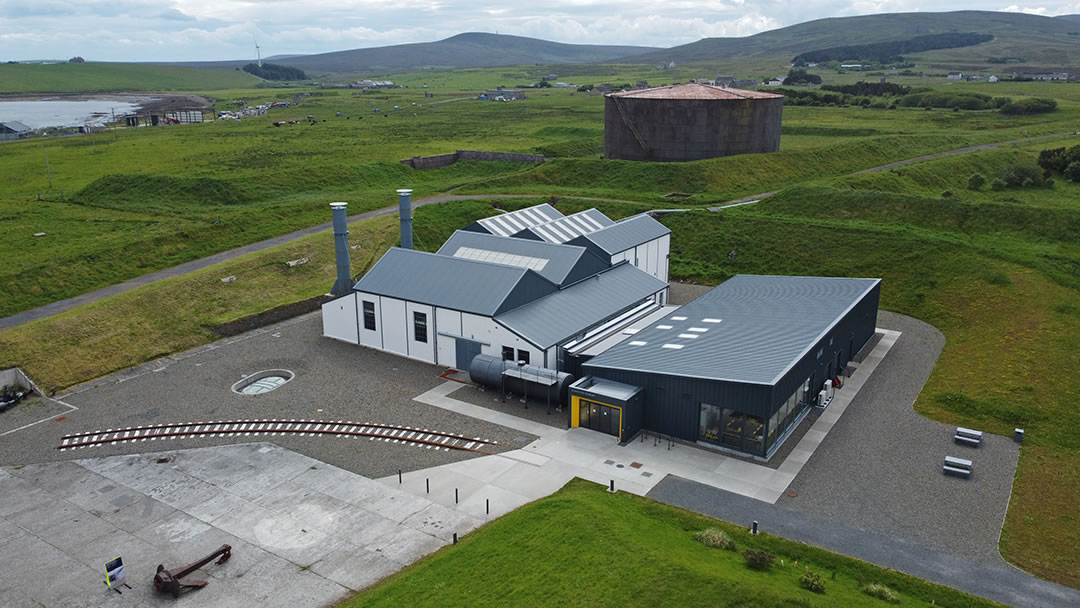
The Scapa Flow Museum
Scapa Flow is an area of sea in Orkney which was used extensively in the First and Second World War. Following the sinking of the German High Seas Fleet in Scapa Flow at the end of the First World War, Lyness on Hoy, which has deep water close to the shore, was used as a base for salvaging these vessels during the 1920s and 1930s.
Then, in the Second World War, Scapa Flow was the British naval base, where battleships would be close enough to the action but just out of reach for enemy bombing runs. At Lyness, known as HMS Prosperine, vast oil storage tanks and large numbers of buildings were constructed for military personnel.
At the end of the Second World War, the area has been cleaned up, and the Scapa Flow Museum, housed in a former oil pumping station, brilliantly brings the story of Scapa Flow to life. You’ll find a series of clear and concise displays, models and old photographs, and artefacts – anti-aircraft guns, the propeller from HMS Hampshire, uniforms, and anti-submarine nets – which are awe-inspiring. It is possible to spend a considerable amount of time here!
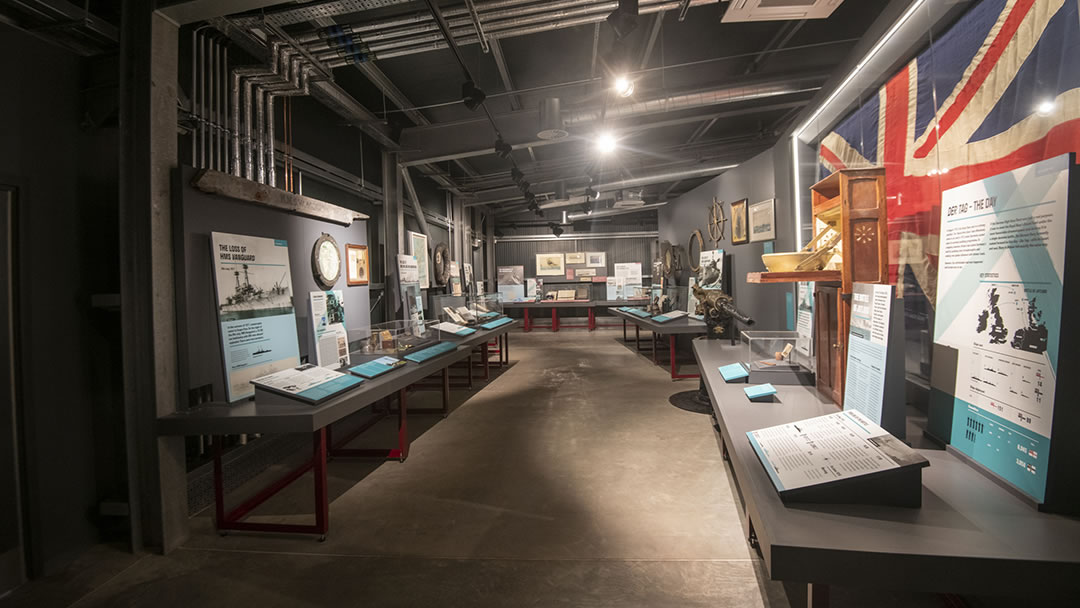
As we emerged out of this wartime museum with gun metal grey skies overhead, I felt quite moved by this atmospheric place. Of all the artefacts, it was a mirror and sink from a German battleship that I thought about the most – and I wondered about the face of the man many years ago who used it to shave and so far from home.
The Scapa Flow Museum is one of the easiest museums in Hoy to reach – it is only a two-minute walk to the ferry from Houton.
Did you know? Towards the end of the Second World War, many of the wooden buildings from Lyness were donated to French towns that had been ruined during the fighting.
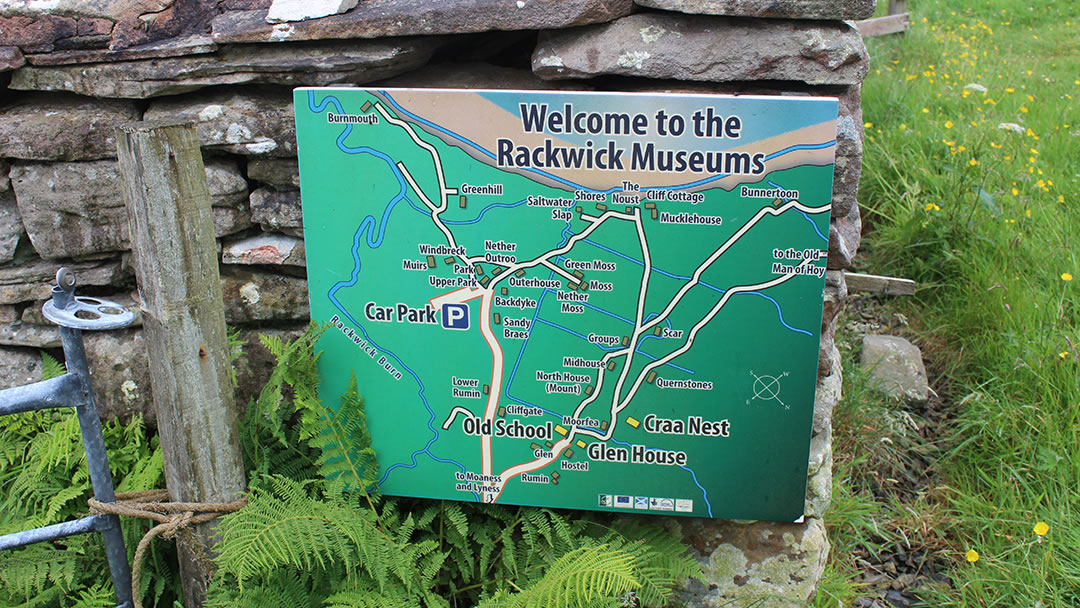
The Rackwick Museums
On the green hillside of Moorfea in Rackwick, there are three little museums housed in historic buildings. To reach them you must make your way to Rackwick hostel, and from there the Old School and Glen House are a very short walk away. Craa Nest is further up the slope and requires some hill walking!
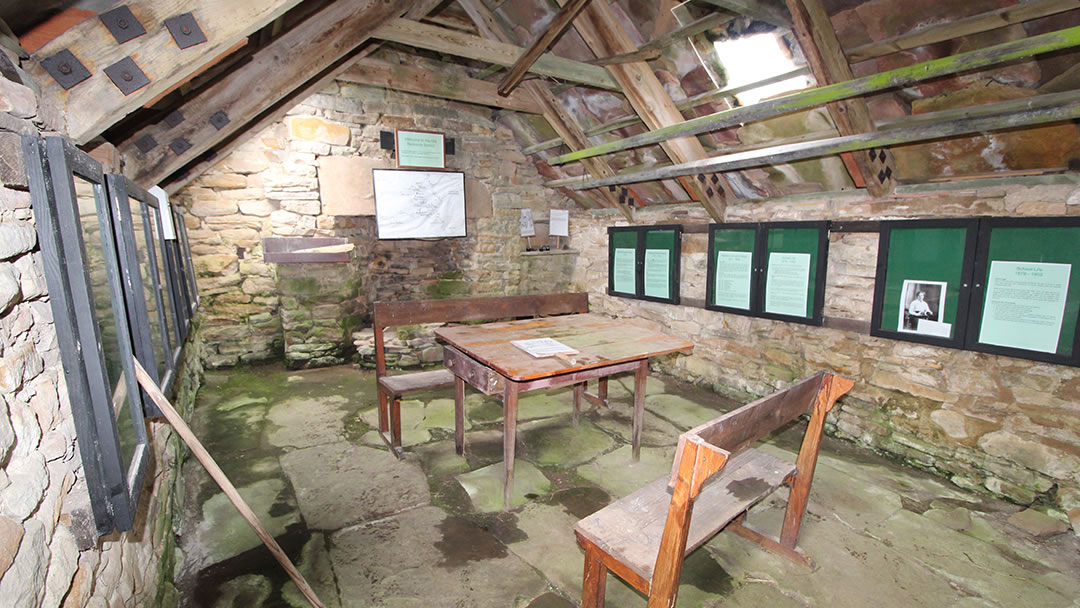
The Old School is one of Rackwick’s oldest buildings. It was used to teach around 15 children of the valley between 1718 to 1724 (at which point the community lost its teacher) and then from 1841 to 1879. This peedie stone space was used to teach pupils reading, writing, arithmetic, history, geography, civics, PE, sewing, knitting, and drawing. From 1879 to 1953, a new building – which is now the Rackwick hostel – was used for school.
Nearby, Glen House is a little bit more modern. This home has wooden floors and walls and was built for Thomas and Catherine Rendall, who was the last teacher at Rackwick school. Glen House now contains a mountain of information about the history of Rackwick, and about climbing the Old Man of Hoy.
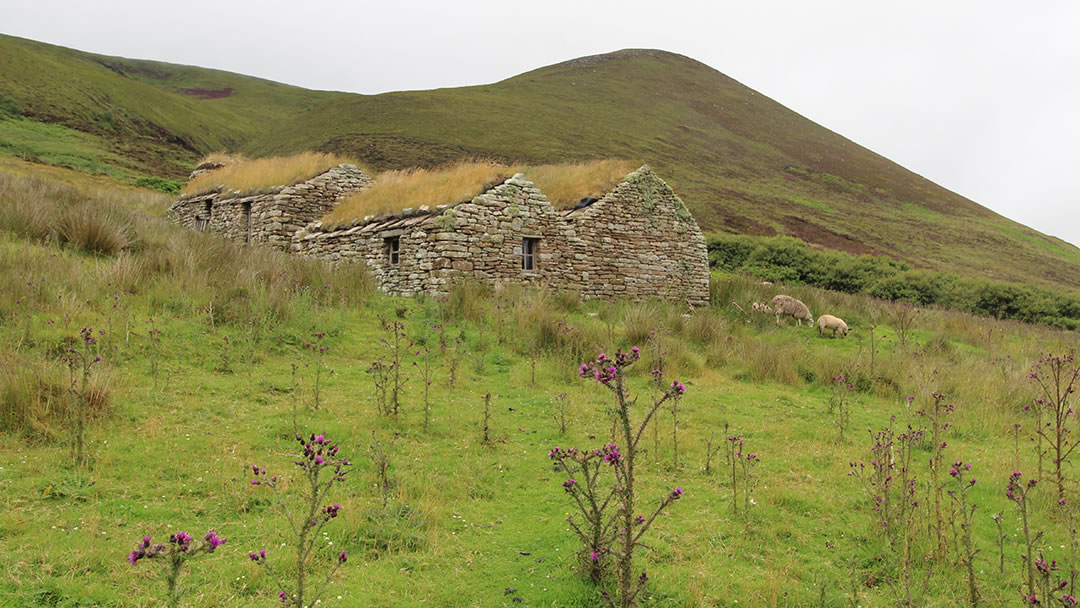
After a short walk along the path which eventually reaches the Old Man, you’ll spot Craa Nest. We were a little out of puff by the time we reached it! Craa Nest is a unique old croft which is sloped inside, like the hill it rests on, and has a bedroom with box beds (to keep drafts away), a kiln for drying grain, a byre for animals, and a shed for fishing gear.
There’s probably no better way to get a sense of what life was once like in this picturesque valley than to enter one of these old buildings.
Did you know? Each pupil had to bring a peat to school each day, and the prize of a book was given out each year for perfect attendance!
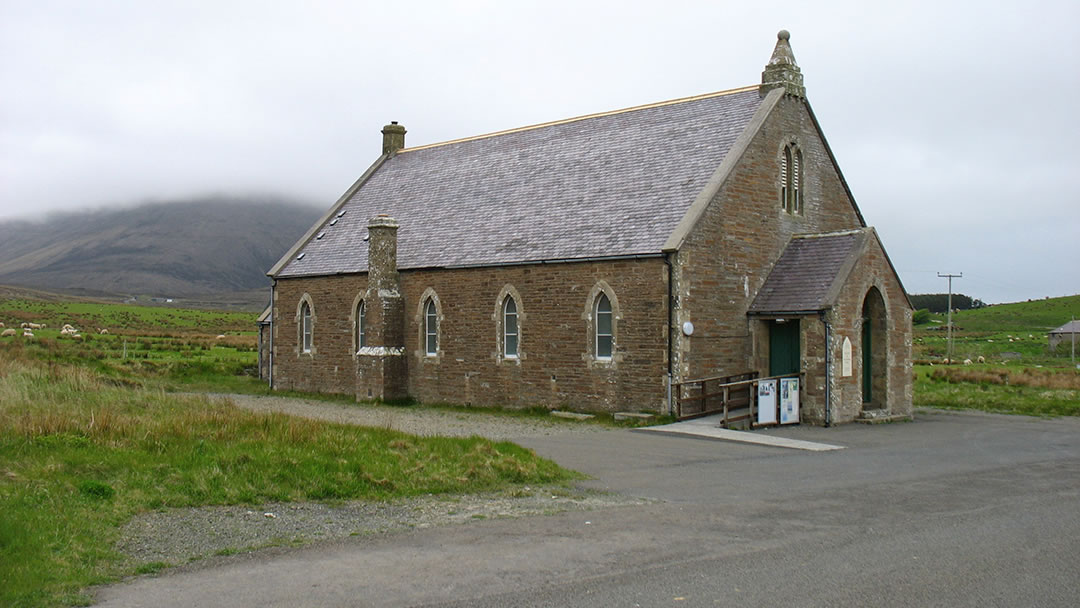
The Hoy Heritage Centre
The immense shape of Ward Hill rises abruptly from the shore of North Hoy. Under the shadow of Orkney’s tallest hill lie a few green fields and small crofts, and amongst these a tiny kirk built in 1891-2. This is now the Hoy Heritage Centre.
This community-run space functions as a museum and also as a venue for events. You’ll find a treasure-trove of information about the parish of Hoy (the area north of Betty Corrigall’s Grave, which includes Rackwick and Braebuster) in the form of community photos, records, books, videos, audio and artefacts. The Hoy Heritage Centre even has a kitchen, so you browse all the stories of shipwrecks, Hoy artists, natural history and crofters whilst sipping a hot cup of tea!
It’s often used for musical performances, dances and talks, and hosts events during the St. Magnus International Festival, the Orkney Storytelling Festival, the Orkney International Science Festival and the Orkney Nature Festival. Regular visitors will also find a changing calendar of new exhibitions to enjoy – check the Hoy Heritage Centre website for the latest news, and a podcast called Tales o Hoy which comes highly recommended!
Always open, the Hoy Heritage Centre is a 20-minute walk uphill from Moaness, the pier where the foot passenger ferry lands from Stromness.
Did you know? Above the pulpit in the Hoy Heritage Centre, you’ll spot a cross made of wood from the HMS Vanguard, a ship which exploded whilst anchored off Flotta in 1917, with the loss of 843 lives.
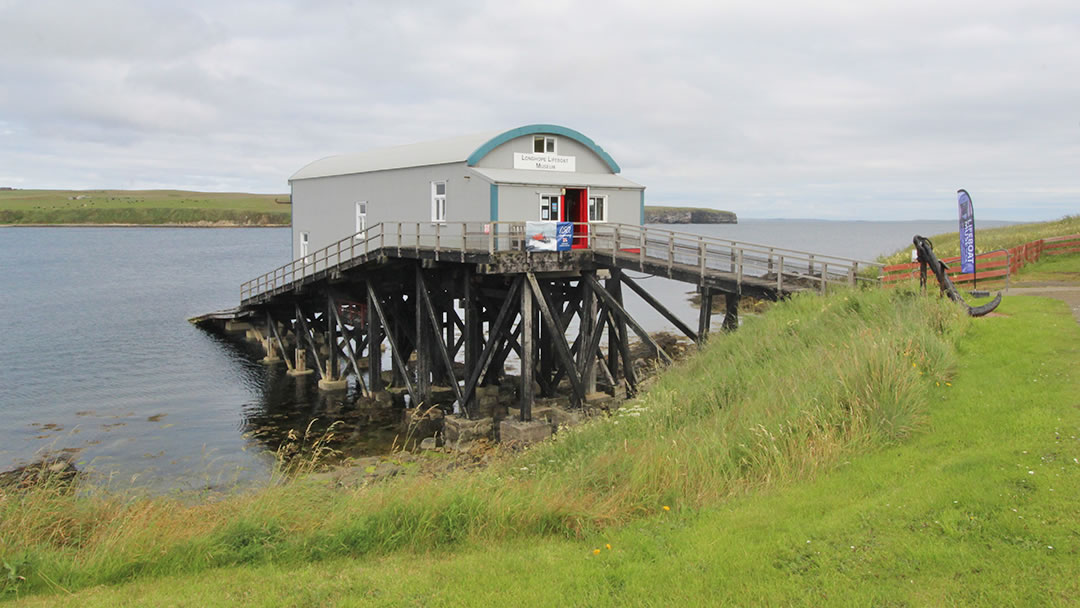
The Longhope Lifeboat Museum
Located at Brims, this gem of a museum is housed within an old lifeboat shed and has as its centrepiece a 90-year-old lifeboat, Thomas McCunn, ready to launch, on a steep steel slipway!
The Longhope Lifeboat Museum is dedicated to the service of the Longhope Lifeboat Station, which first operated from a building on the nearby ayre (with two doors so the lifeboat could depart in any direction), before moving to this shed from 1874 to 1999. The current lifeboat, RNLB Helen Comrie, now resides in Longhope harbour.
Over the years, the brave volunteers of the Longhope lifeboat have saved 742 lives at sea. Many of these stories are displayed here, told with photos, newspaper articles, medals and dramatic paintings. Details of each lifeboat launch are on display, and it was eye-opening to note how often the lifeboat was used as an ambulance to transport poorly patients from Hoy and Flotta.
The Longhope Lifeboat Museum also has a dedicated area for the crew of the T.G.B. During a vicious storm on the night of 17th March 1969, whilst en route to assist a foundering freighter, the lifeboat T.G.B. capsized. Tragically, all eight men lost their lives.
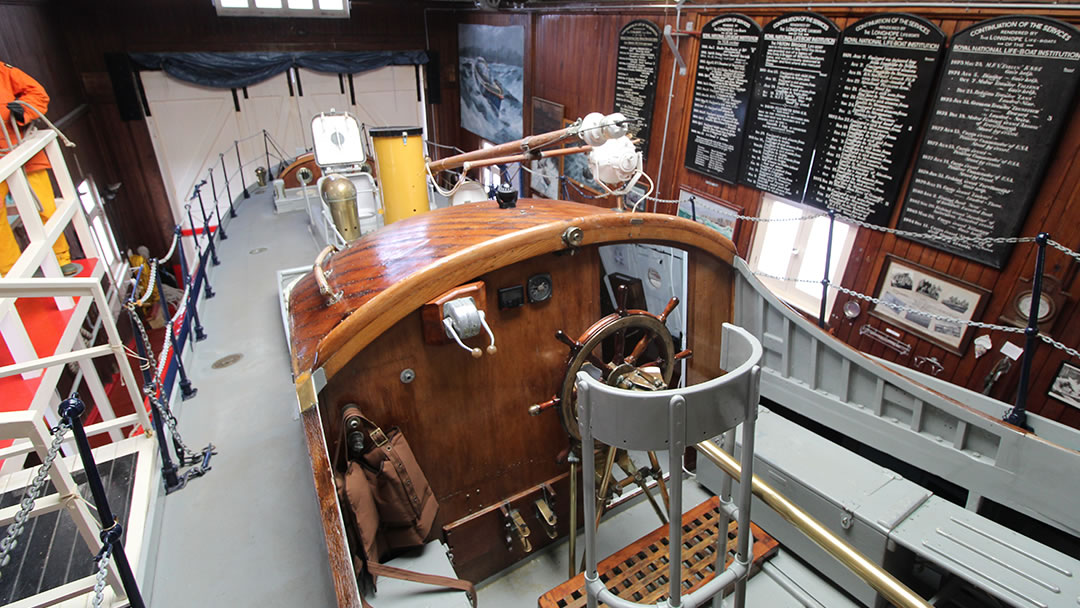
Visitors to the Longhope Lifeboat Museum can observe the beautifully preserved Thomas McCunn from a balcony. A sister lifeboat to the T.G.B., Thomas McCunn served from 1933 to 1962 and saved 308 lives.
We were lucky enough to climb aboard the lifeboat for a guided tour. On the top deck the coxswain would operate the wheel, strapped in, with only a small windshield to protect him from the wind and waves. Our guide took us down below into the confined quarters of the lifeboat. The survivors of a sinking ship would be glad to find themselves in here!
Did you know? After leaving Orkney, the Thomas McCunn spent some time on Hayling Island on England’s south coast until her owner sold her to the Longhope Lifeboat Museum for just £1! She is still launched into the water on special occasions.
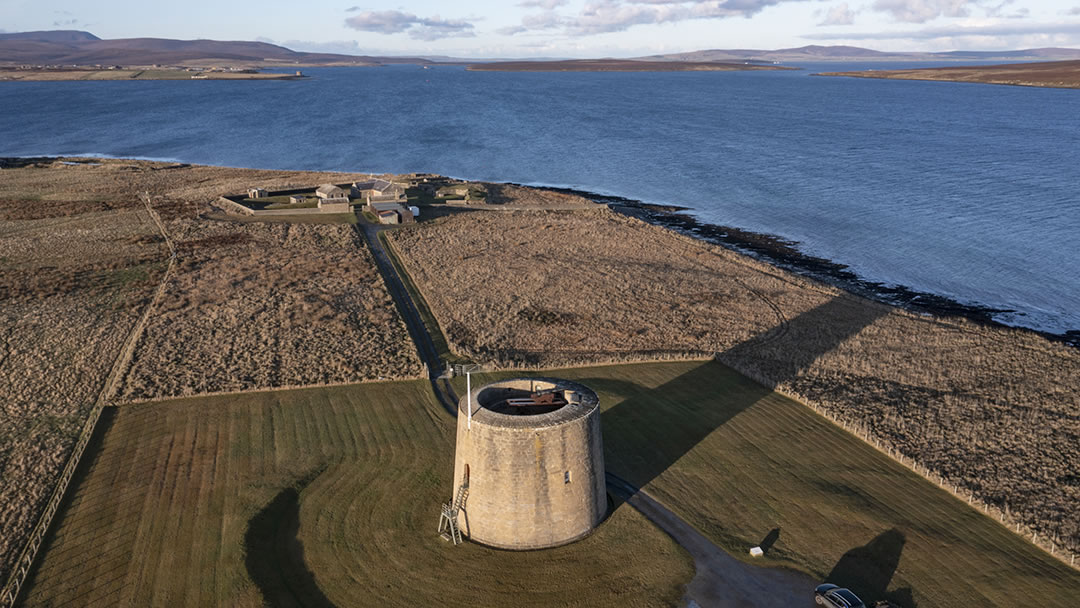
Also: the Martello Towers and Melsetter House
Though not strictly museums, the Martello Towers and Melsetter House are also worth visiting.
The Martello Towers are defensive batteries at either side of Longhope Sound. After the US declared war on Britain in 1812, and following threats from France, ships began to sail north rather than sailing through the English Channel. Longhope Sound was a safe place to shelter, but gathering ships were vulnerable until a warship escort arrived.
Extra defence was provided by two 10m tall stone towers, constructed in 1813 and 1815 at Crockness and Hackness. At the top of each round tower, a cannon was mounted on an iron track and could provide a 360-degree arc of fire. Each gun could fire a 68-pound shot over a mile, enough to seriously damage any ship!
The Martello Tower at Hackness can be visited, and the tour of the living quarters for the gun crew and the revolving gun carriage, is a treat.
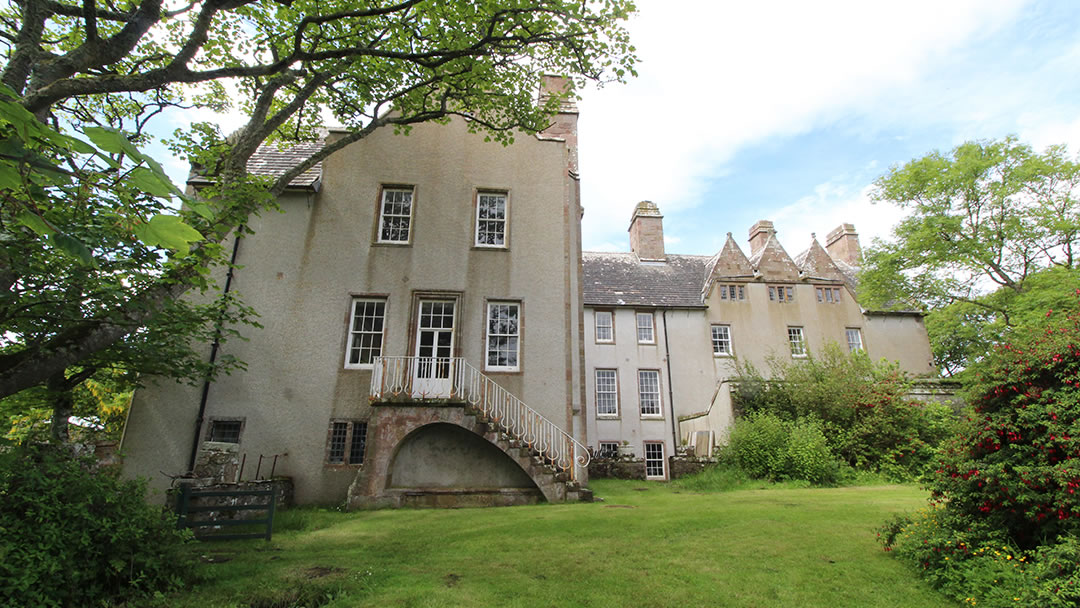
Built in 1738, Melsetter House was a laird’s house for the Moodie family. However, in the late 19th century, the Middlemore family, rich from manufacturing leather bicycle seats, bought the property. In 1898 they commissioned William R. Lethaby to design Melsetter House as it is today in the Arts and Crafts style.
Walking into this striking country house is like entering a light and airy French chateaux, decorated with tapestries and silken wall hangings. Melsetter House is furnished with William Morris tables, chairs and rugs. Outside, there are heart-shaped windows, a suntrap of a courtyard, large gardens, and a chapel which contains delicate stained-glass windows by Christopher Whall, Edward Burne-Jones and Ford Madox Brown.
Though it is a private residence, Melsetter House can occasionally be visited by appointment. Please phone 01856 791352 to arrange a suitable time.
 By Magnus Dixon
By Magnus DixonOrkney and Shetland enthusiast, family man, loves walks, likes animals, terrible at sports, dire taste in music, adores audiobooks and films, eats a little too much for his own good.
Pin it!